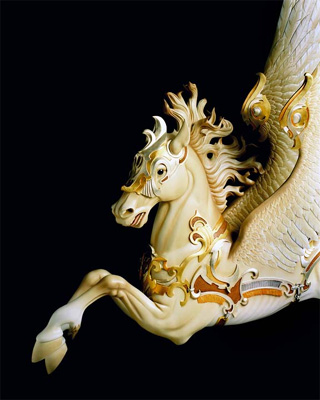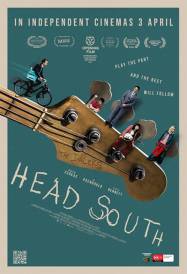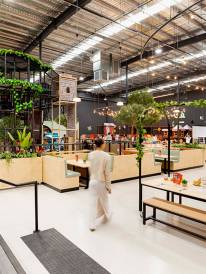Mythic Creatures Dragons, Unicorns & Mermaids

Mythic Creatures Dragons, Unicorns & Mermaids
19 December - 23 May 2010
Australian National Maritime MuseumDarling Harbour
The Australian National Maritime Museum in December will open its doors to a host of utterly fantastic creatures: dragons, mermaids, gigantic birds, serpents, unicorns and a great many more....
Some will be represented by models of large and frightening proportions, others will appear in works of art and authentic artefacts from different cultures around the globe.
The exhibition will consider what in the natural world originally caused these creatures to take shape in human imagination; it will show too that many of them have endured down through the centuries in powerful stories, vivid images and creative mythology.
"The natural environment imposes powerful forces on our imagination and on our beliefs," Mary-Louise Williams, director of the Australian National Maritime Museum said today. "This is very true at sea where the sense of isolation and vulnerability has produced eons of mythology and raised extraordinary beings from the depths."
Mythic Creatures: Dragons, Unicorns & Mermaids is a major exhibition organised by the American Museum of Natural History (www.amnh.org), New York, in collaboration with the Australian National Maritime Museum, The Field Museum, Chicago, Canadian Museum of Civilization, Gatineau (Quebec), and Fernbank Museum of Natural History, Atlanta.
Highlights of the exhibition include a colourful 37-metre Chinese parade dragon; a scary 3-metre European dragon with a wingspan of 4 metres; a huge roc with a 6-metre wingspan and large sharp talons swooping above the heads of visitors; a kraken whose tentacles appear to rise out of the floor as if surfacing from the sea.
Australian references include;
· The bunyip* - represented by a 1930s sculpture by Gerald Lewers.
· The yawkyawk** - represented by Indigenous artists Crusoe Kurddal's wooden sculpture and Lena Rarinkkura's woven grass sculpture.
The exhibition introduces more than 100 mythic creatures from around the world, arranged according to their habitat - those that live in the water, on the land and in the air.
And then there is a special section devoted to dragons, demonstrating the profound differences between the European and Asian versions of these powerful reptilian beasts. European dragons are typically smelly, fire-breathing evil monsters, while their Asian counterparts are benevolent deities that control the rains and bring good fortune.
Mythic Creatures will appeal to visitors of all ages. As well as paintings, sculptures, richly patterned textiles and other cultural treasures paying tribute to these icons of imagination, the exhibition includes many hands-on features, fun activities, soundscapes and multimedia elements.
The Australian National Maritime Museum will present a broad range of activities associated with the exhibition including night-time tours of the exhibition gallery, reading sessions for kids in a specially decorated dragon lair reading room, outdoor cinema and craft workshops.
The exhibition has been highly acclaimed on its appearances so far in New York, Chicago and Gatineau (Ottawa, Canada): "A brilliant curatorial idea" - New York Times; "On a scale of one to ten... a mythical ten." - New Yorker; "Harry Potter would probably feel right at home here." - Associated Press; "Deftly combines nature and myth..." - Yahoo! News.
In Australia Mythic Creatures: Dragons, Unicorns and Mermaids will appear only at the Australian National Maritime Museum. It will be on view, admission FREE, from 19 December until 23 May next year.
The museum, at Darling Harbour, is open daily, 9.30 am to 5 pm (6 pm in January). For further information, www.anmm.gov.au or phone (02) 9298 3777.
* The bunyip, in Indigenous lore, was a mysterious man-eating creature that inhabited rivers and billabongs in the Australian bush. In colonial Australia bunyip stories were retold to warn children about the dangers of their alien environment. Later the bunyip evolved into a far more benign plant-eating character in children's books.
** In certain Indigenous traditions the yawkyawk, similar in form to a mermaid with the body of a woman and tail of a fish, is associated with fertility. It can also bring rain and, if angered, provoke fierce storms.
MORE



